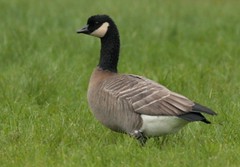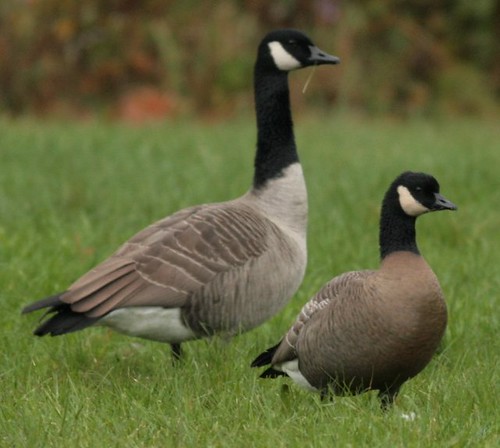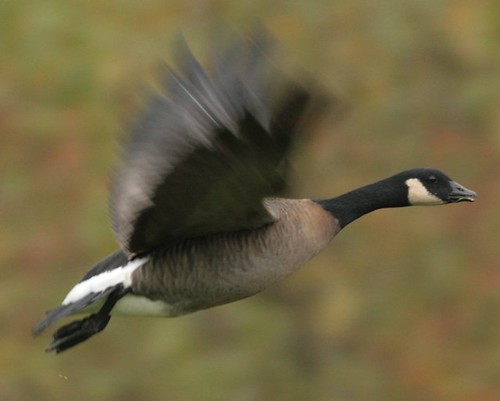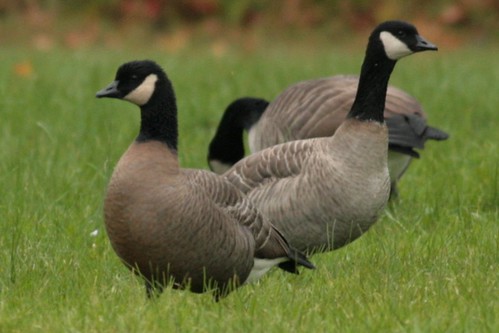Photo#1.1 Dark breasted bird (#1). This bird's dark breast, small size and bill, and short neck made it stand out from the Canada geese, 10/16/09
Photo 1.2- Bird #1 and Canada goose, 10/16/09
Photo 1.3 Bird#1 in flight, 10/16/09
Photo 2- Bird #1 with a second (Bird #2) cackling goose. Bird #2
 Photo #3 10/20/09 (from here on)- Cackling Goose- Rear view
Photo #3 10/20/09 (from here on)- Cackling Goose- Rear view Photo #4 Cackling Goose... profile... this image may have gotten streched lenght wise a little bit
Photo #4 Cackling Goose... profile... this image may have gotten streched lenght wise a little bit Photo #5 Cackling Goose (right) Canada (left)
Photo #5 Cackling Goose (right) Canada (left) Photo #6 Cackling Goose in front of Canada goose (10/20/09)
Photo #6 Cackling Goose in front of Canada goose (10/20/09) Photo #7 - 3 geese.... The dark breasted bird on the left is the IDed Cackling Goose, the goose in question the bird on the right side of the image... to my untrained Cackling mind, this bird looks good for a "typcial" Richardsons??
Photo #7 - 3 geese.... The dark breasted bird on the left is the IDed Cackling Goose, the goose in question the bird on the right side of the image... to my untrained Cackling mind, this bird looks good for a "typcial" Richardsons?? Photo #8 - bird in question is in the front, walking left... note smaller bill, shorter neck and white patches
Photo #8 - bird in question is in the front, walking left... note smaller bill, shorter neck and white patches



Looks like two Cackling Geese. The pale bird looks good for Richardson's Goose (hutchinsii) which occurs regularly in NYS--note the frosty upperparts, short neck, square head, small bill, long wings imparting a spindle-shaped body profile, and pale breast. The dark one is suggestive of minima, which would be quite noteworthy--much darker breast, smaller overall size, smaller bill.
ReplyDeleteHi tizbirdz
ReplyDeleteI'm in the process of creating an online "Field Guide to the Birds of Vancouver Island' and hoping that you might be generous enough to donate your excellent cackling Goose photos to the project. The range maps and text are stored at http://picasaweb.google.com/warbler2020 under RANGES. Those who have donated so far are listed with links to the stored photos on Flickr under the Mockingbird image. My email is warbler2020@gmail.com If you are interested please leave your photo website address and a note of permission.
My real name is Keith Taylor and the explanation for Greg Smythe’s name on the website is explained under the picture of Homer Simpson.
Thank you
Keith